Jalakandeswarar Temple / Jalakanteshwara Temple in Vellore Fort, Vellore : An 1,500 years old Lord Shiva Temple built by Vijayanagara Kings – Visit, Temple Timings, History, Travel Guide (Updated)
– temple with a grand representation vijayanagara architecture
The great Jalakandeswarar / Jalakanteshwaratemple is one of the oldest Lord Shiva temple located in the Vellore Fort, in the Vellore district. This magnificent temple is a representation of grand Vijayanagaram Architecture which is around 1,500 years old.
The temple, facing east, consists of a Garbhagriha, an Ardhamandpa, and a Mahamandapa with two courtyards having two Prakaras and gopuras. There are Sub-shrines dedicated to Nataraja, Ganesha, Srinivasa, Subramanya, and Amman. Apart from these shrines, the temple has Madapalli, Yagasala, and a small stepped tank. The importance of the temple lies in its Kalyana mandapa. It stands as a testimony to the architectural workmanship of the Vijayanagara period.
The temple also has an idol of Sri Akilandeswari Ammaiyar, the consort of Jalakandeswarar. The specialty of the temple is we can get blessings from all three Lords with their consorts – Lord Vishnu with Goddess Mahalakshmi, Lord Brahmma with Goddess Saraswathi, and Lord Shiva with Goddess Parvathi grace the devotees in the temple.
History of Jalakandeswarar Temple Vellore
This temple is popularly called Jalakantesvara temple, but the inscription found in the nearby village mentions the name of the deity as Jvarahareshwara. This temple was built by Chinna Bommi Nayaka, a subordinate of Sadasivaraya of the Vijayanagara dynasty in the mid-16th century CE.
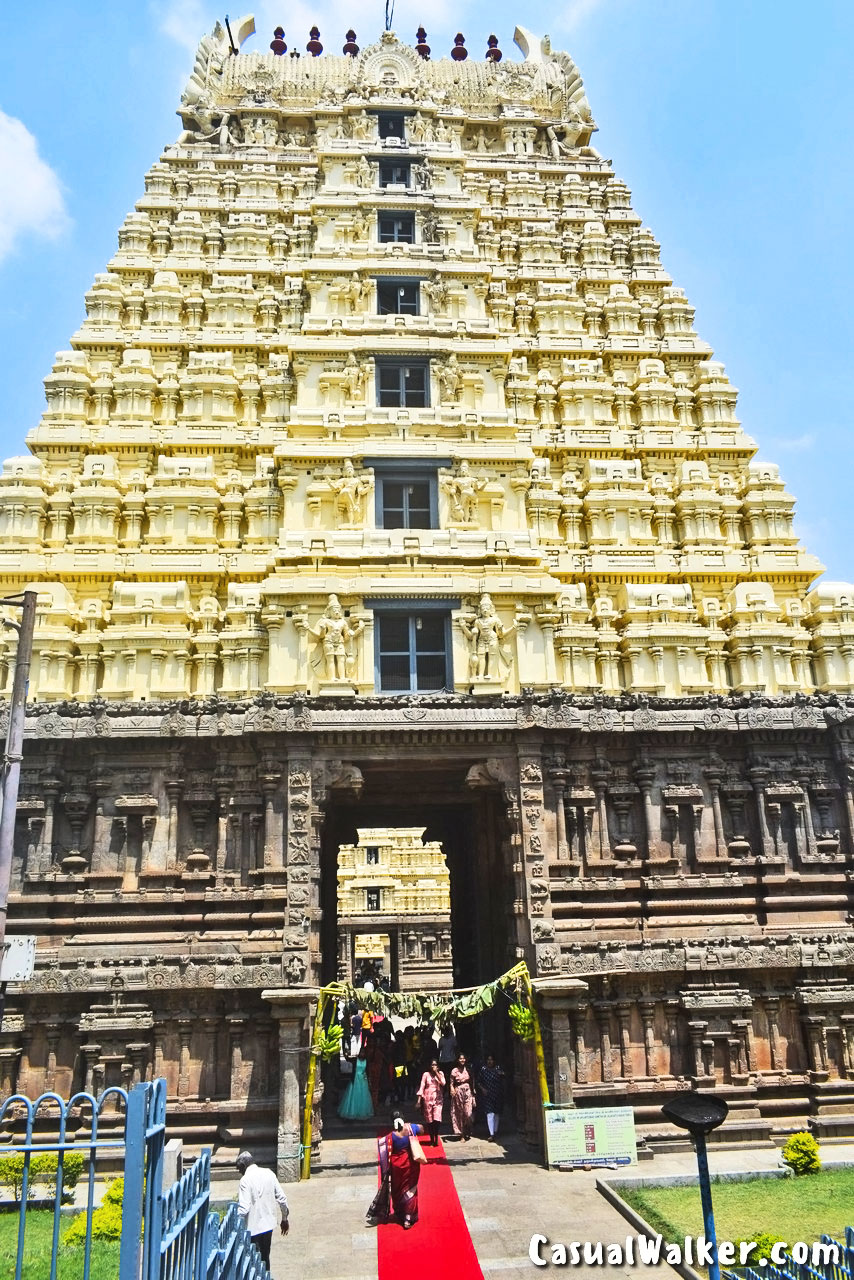
The lingam in this temple was consecrated by Athiri, one of the Saptarishis. It is said that there is water below this Shiva Lingam. Hence the name Jalakandeswarar was given to Lord Shiva who graces here.
After the time when Saptarishi Athiri consecrated and worshiped the lingam at this place, the location of the lingam is covered with white-bark acacia Trees, and the Lingam is covered with ant hill. Rain waters in the lower levels of the anthill made a tank there.
Lord Shiva appeared in the dream of a king Bommi Reddy who was ruling the region and asked him to build a temple. The king went to the tank, demolished the anthill and took out the Shivalinga, and installed the Lord in the water itself in 1550 BC. Stones were brought by elephants from Pallikondarayamalai for the temple construction.
King Bommi who built the fort and the temple, consecrated the Shiva lingam and named it ‘Sri Jevarakandeswarar. He built a separate shrine and named Ambal ‘Sri Akhilandeshwari’.
He destroyed the white-bark acacia groves around the temple and built the city. So, he named the city “Vella oor” (“Vel maram” in Tamil for white-bark acacia trees, and “oor” means town in Tamil). Over time it came to be known as Vellore. The structures of this temple have been constructed in different periods and different regimes.

The temple is currently wonderfully managed and highly conserved by the Archaeological Survey of India under the guidance of the Government of India.
When the Vellore fort came under the control of the Archaeological Department, there were no statues inside the sanctum sanctorum of this temple. On 16 March 1981, the Shiva lingam at Sathuvachari was taken away and re-consecrated. Ever since then, eternal worship has been going on in the temple.
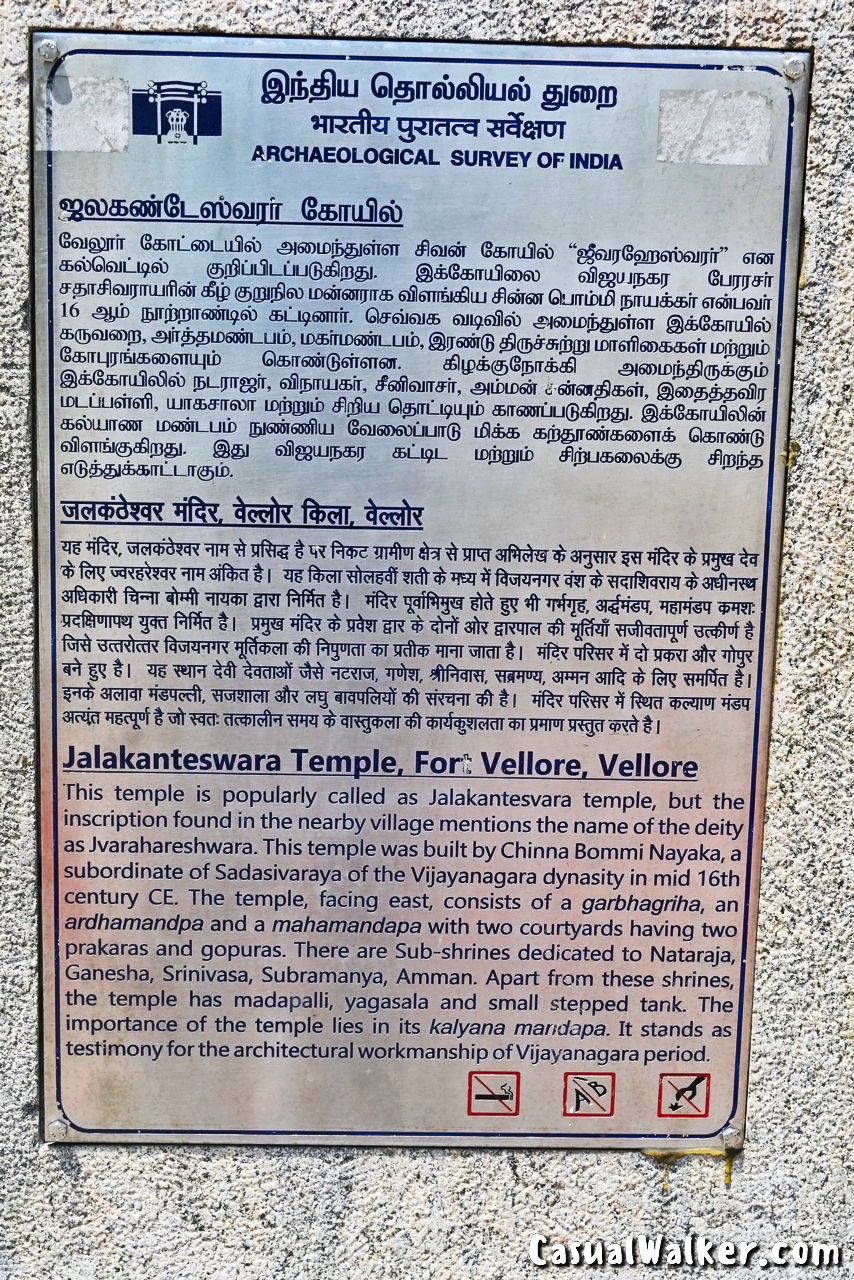
The Jalakandeswarar Temple is situated within a fort spread over 136 acres in the heart of Vellore district.
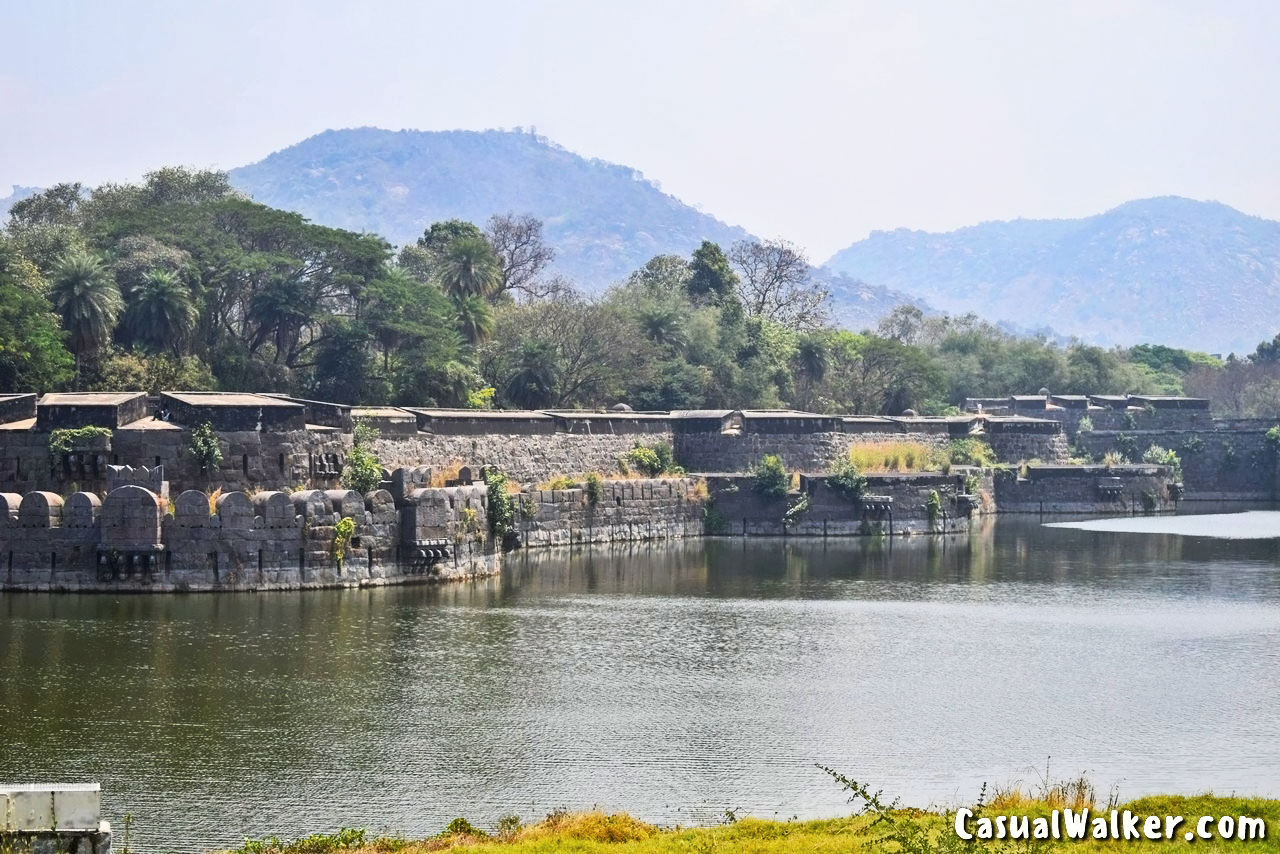

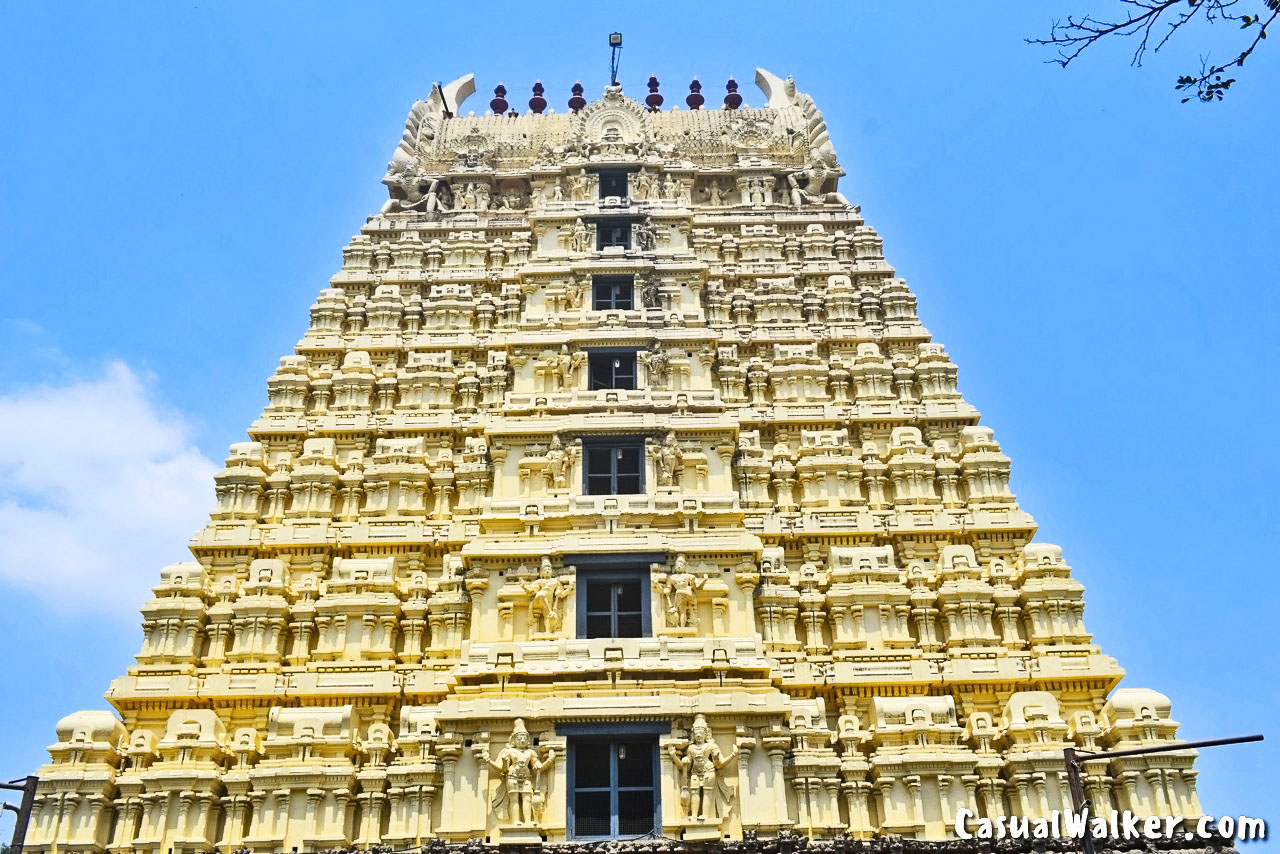
The walls, towers, and wedding halls of this temple were built by Vijayanagar emperor Sadasiva Deva Maharaja.
Jalakandeswarar Temple is a fine example of Vijayanagara architecture. This temple is the abode of the trinity of Lord Shiva, Lord Vishnu, and Lord Brahma and along with the great three Goddess Parvati, Goddess Lakshmi, and Goddess Saraswati.
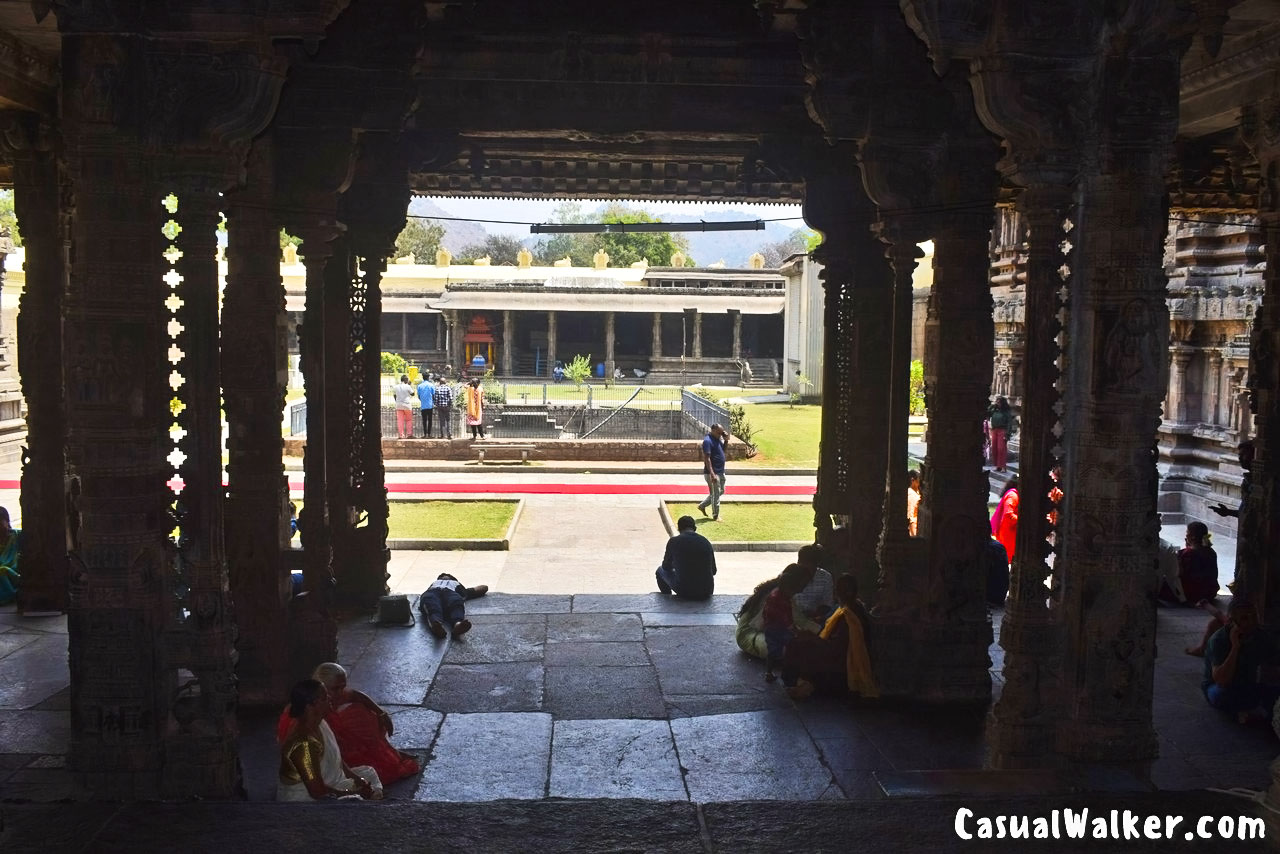
Jalakandeswarar Temple is a fine example of Vijayanagara architecture. This temple is the abode of the trinity of Lord Shiva, Lord Vishnu and Lord Brahma and along with the great three Goddess Parvati, Goddess Lakshmi and Goddess Saraswati.
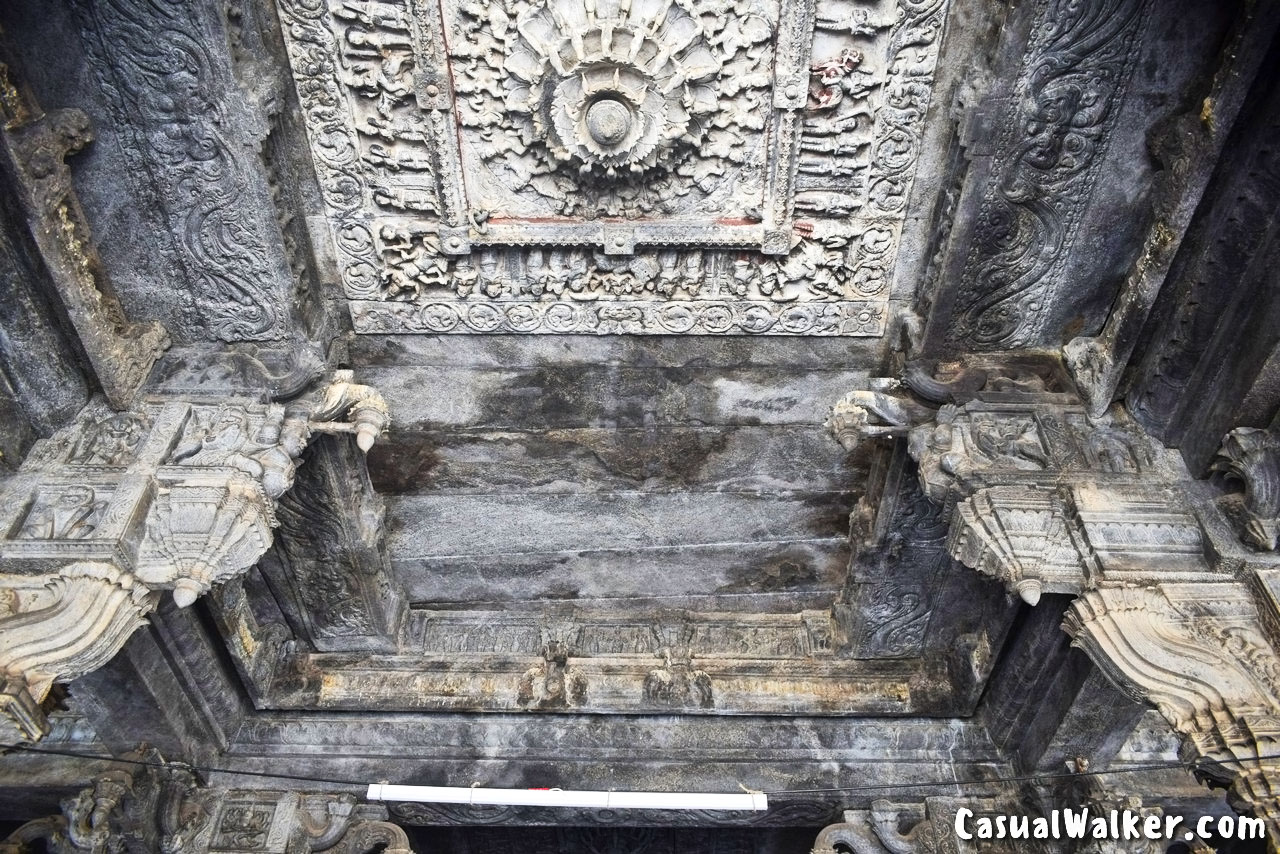
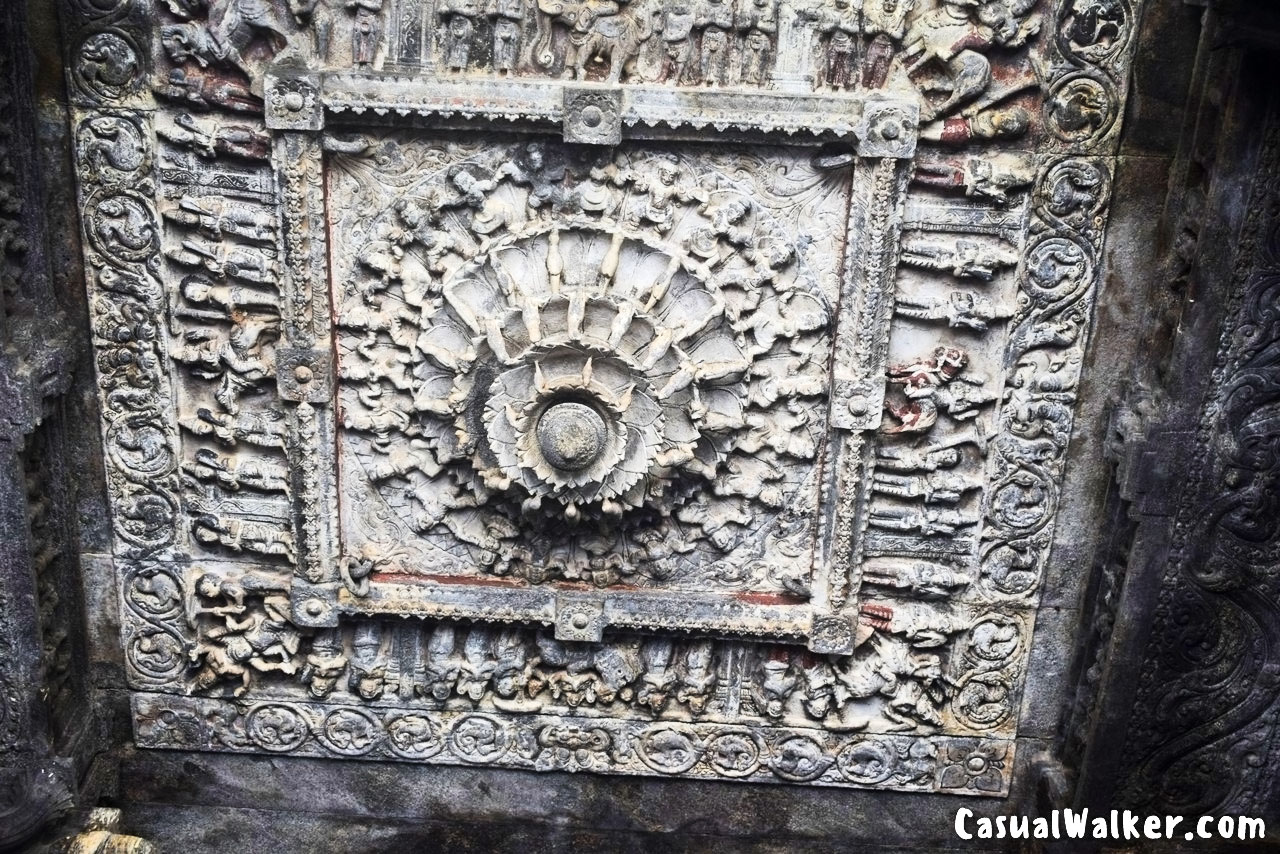
During the Karthikai (between the month NOV – DEC) when lord Shiva appeared as Jyoti Soruban before Brahma and Vishnu.
Based on the fact that the three lords are seen together on this day, here all three are raised on the same palanquin. That evening, lighting a lamp at the Rajagopuram, performing a special Abhishekam for the trio. On this one day only all three murtis can be seen together.
1008 Sangabhishekam is performed for Lord Shiva on the last Monday of Karthikai. Also, Lord Venkateshapperumal is seen in the Tirupati setting behind the Shiva shrine.
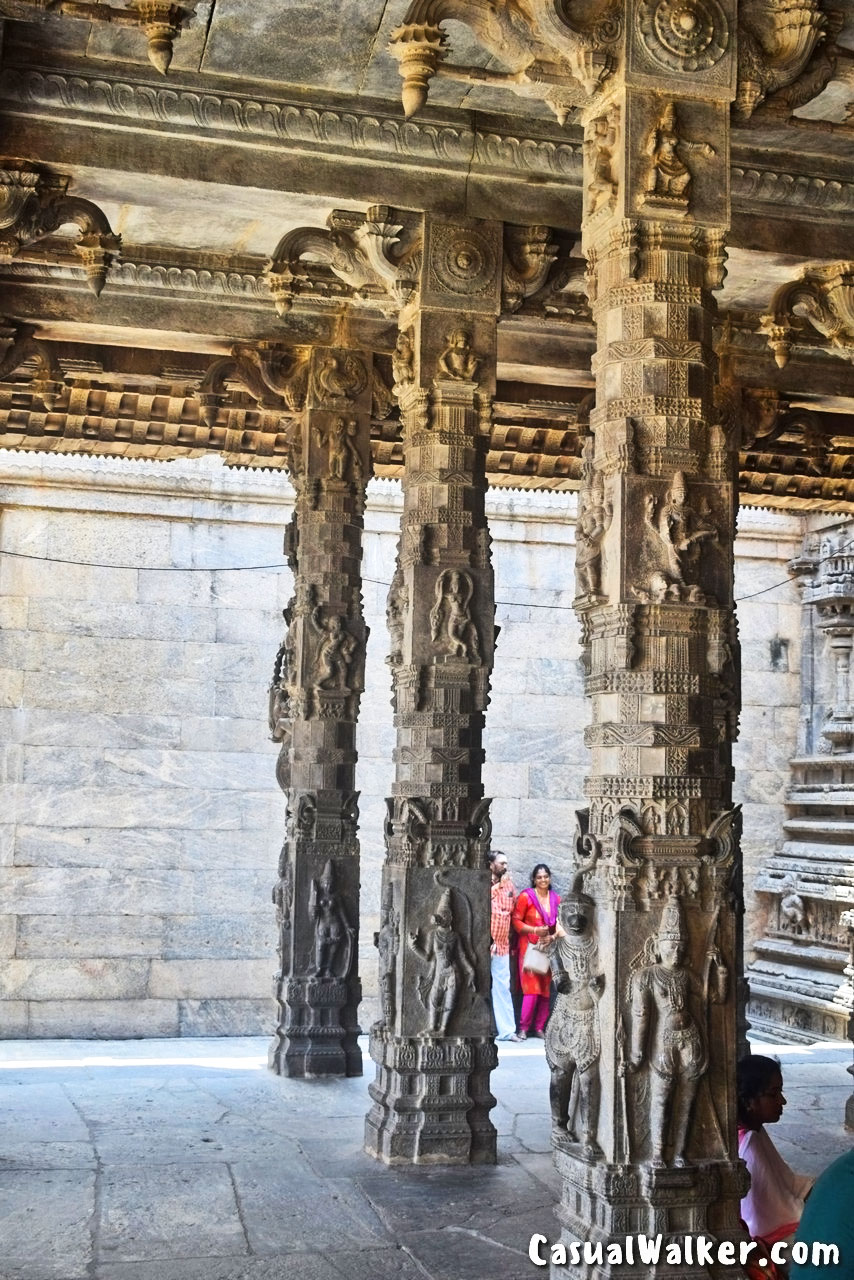
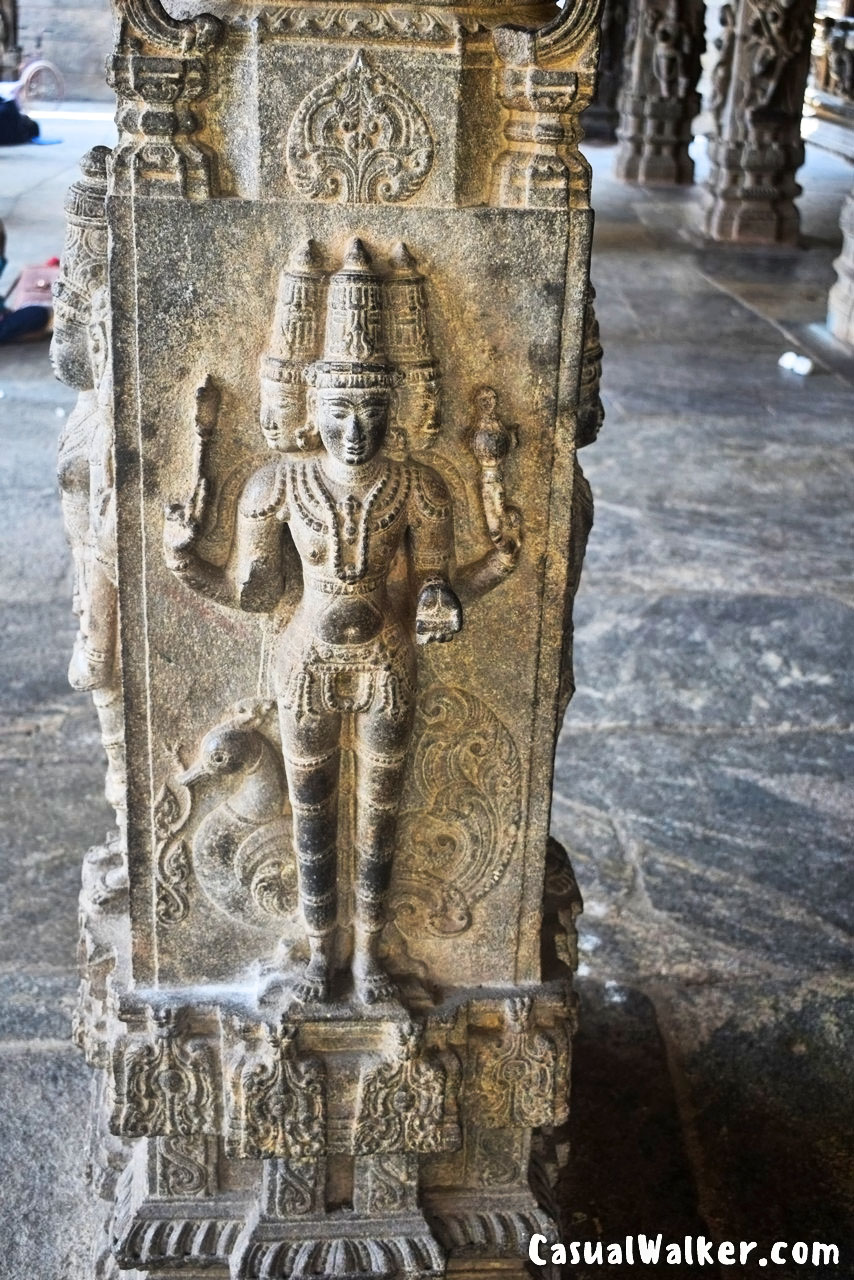
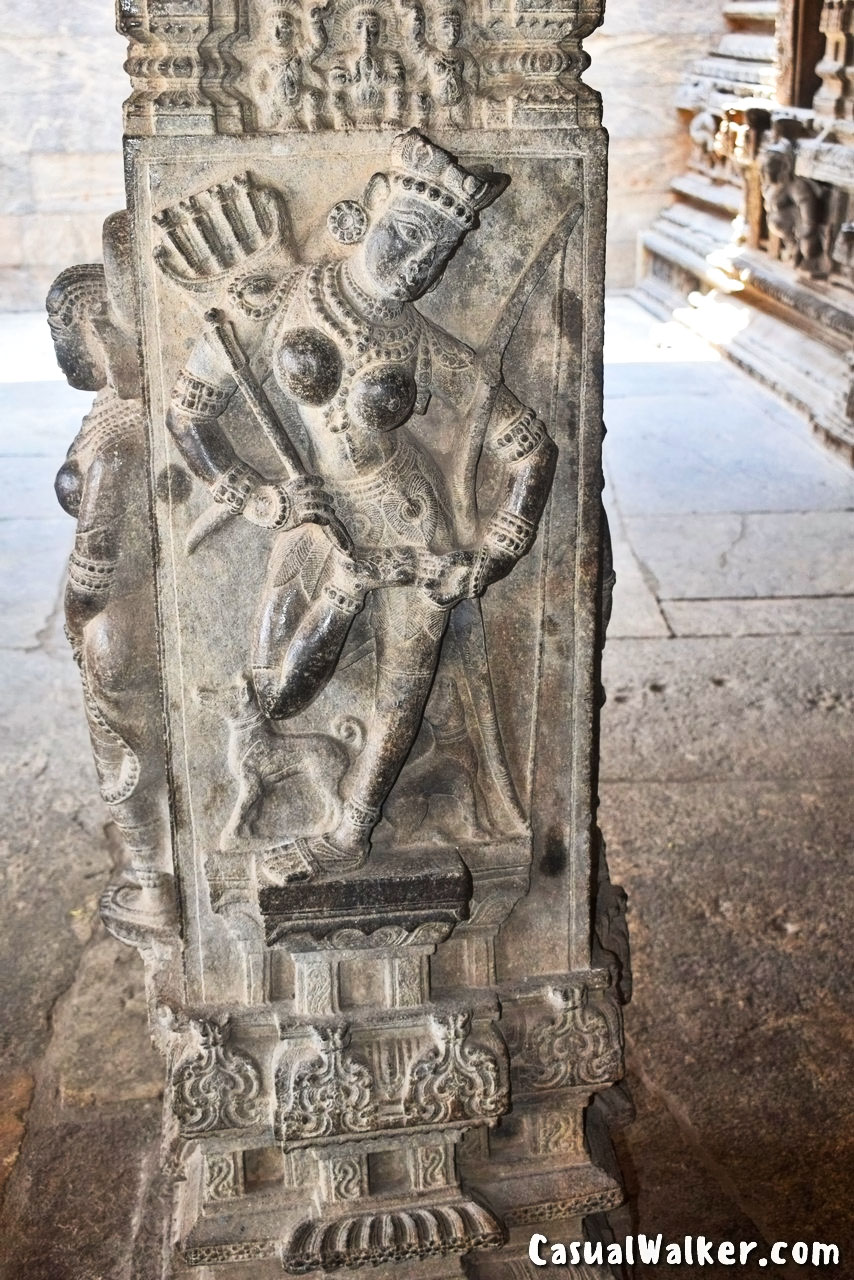
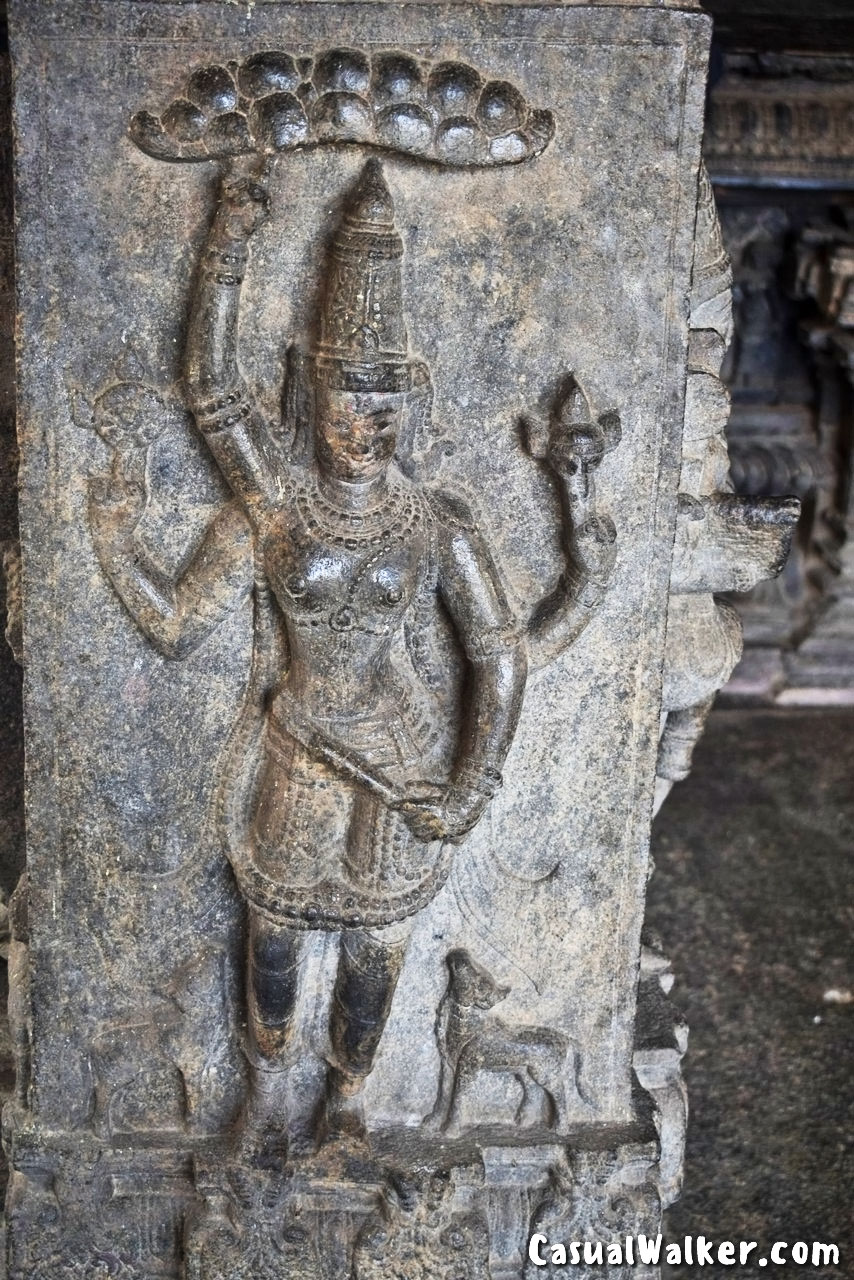

A great lamp above the Jyothi has a diameter of 27 inches representing the 27 stars starting from Ashwini to Revathi called Navasakthi Jyothi is located in front of the Goddess – Amman shrine.
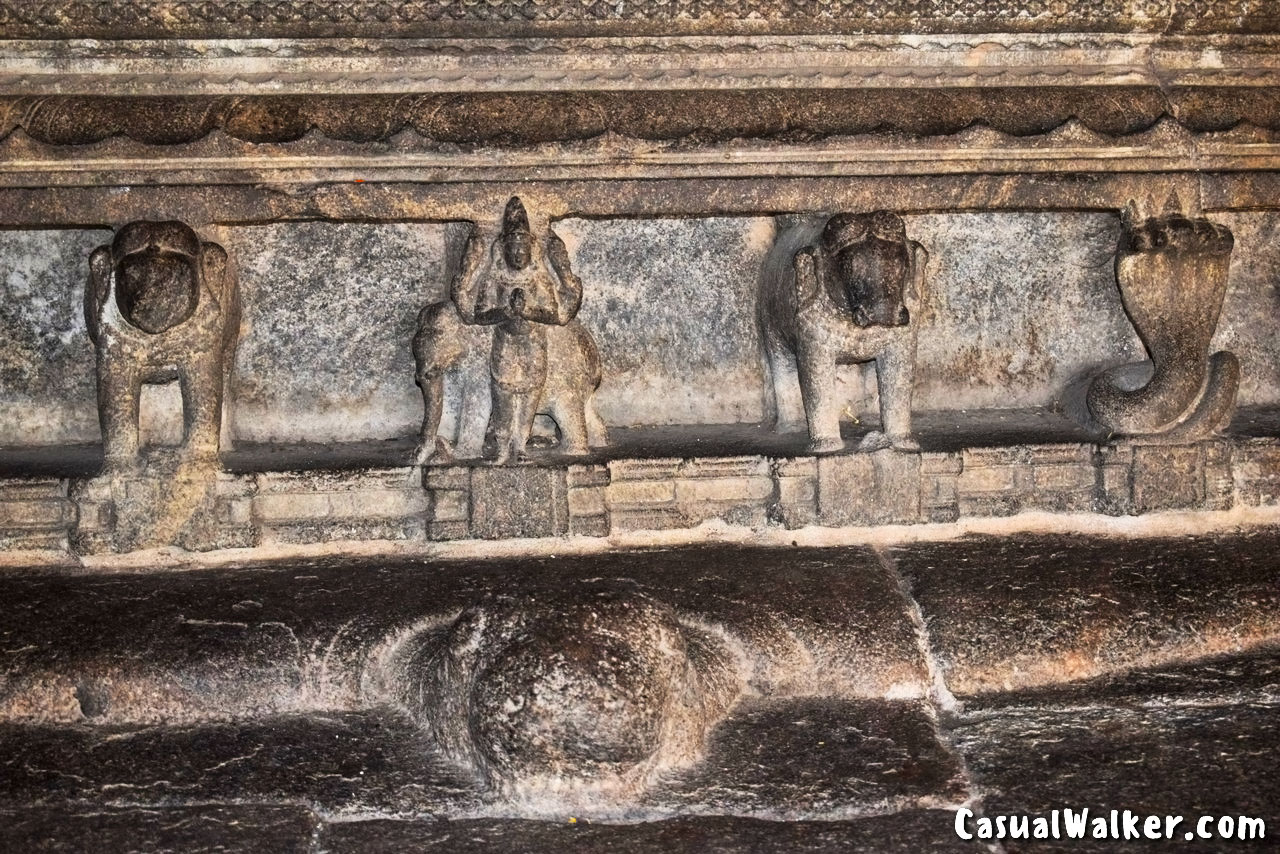
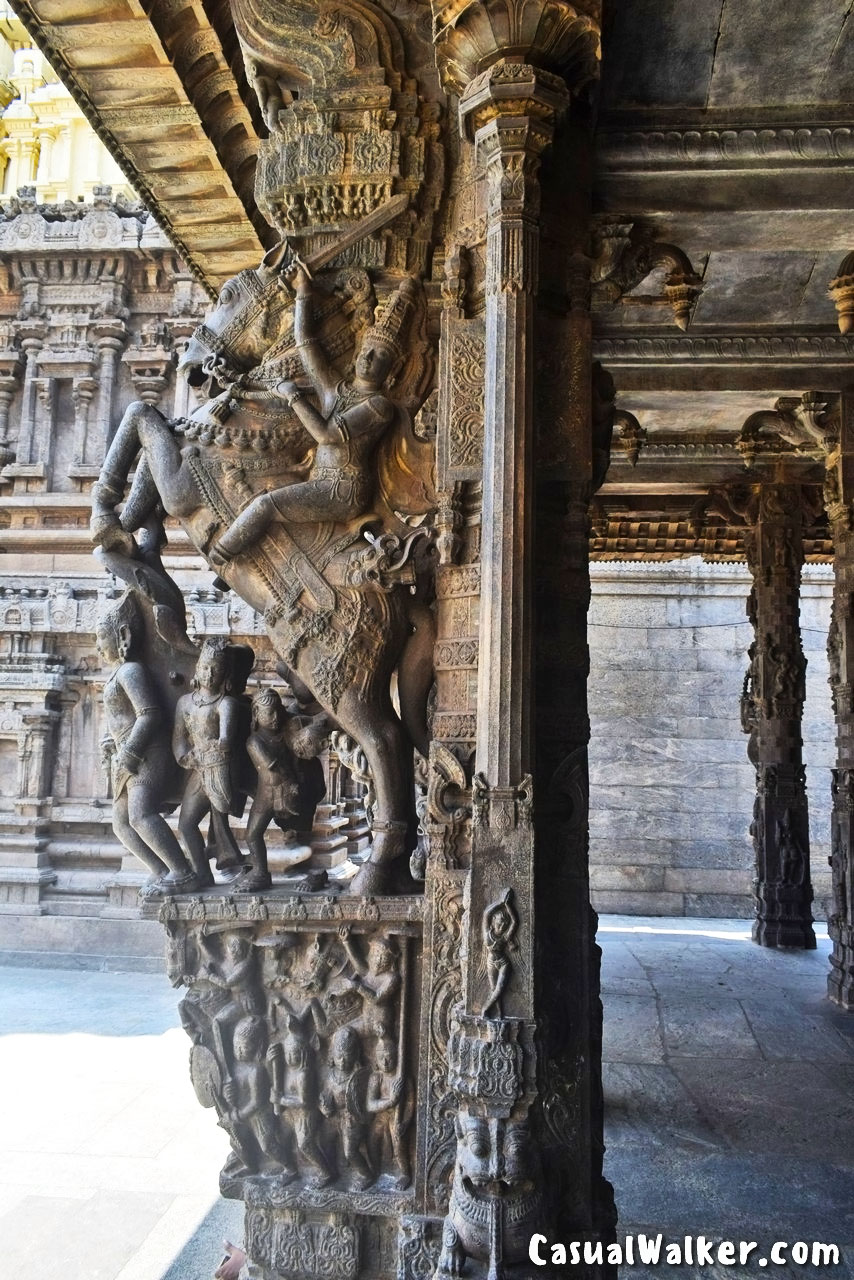
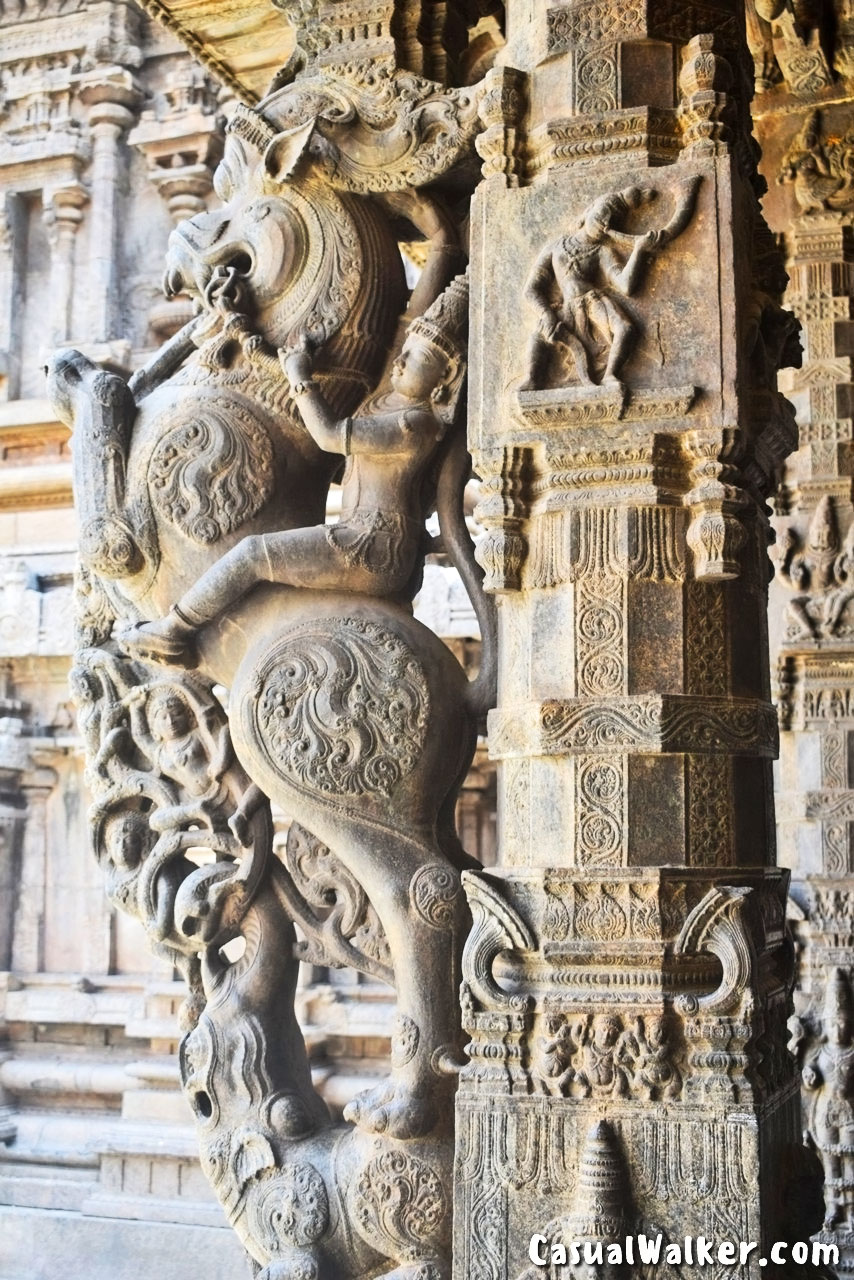


Major festivals celebrated in Jalakandeswarar Temple / Jalakanteshwara Temple in Vellore
10-day Chitra Purnima (April – May)
Mahashivaratri (Feb.)
10 Day Adipuram (July – August)
Ganesha Chaturthi in Avani (August – September)
Navratri (September-October)
Surasamharam in Aipasi (October – November)
Every month Vakriparai and Teipirai Pradosha worship. Sankataharasadurthi, Krithikai, Sashti festivals, full moon special Abhishekam. Annually 6 Abhishekams for Sri Nadarajar, Guru Puja for 63 Nayanmars. Jalakandeswarar festival in March. Ganga Balatheeswarar Anniversary Festival for Adiper. Adhik Kritika festival-special decoration and Karthika Deepam.
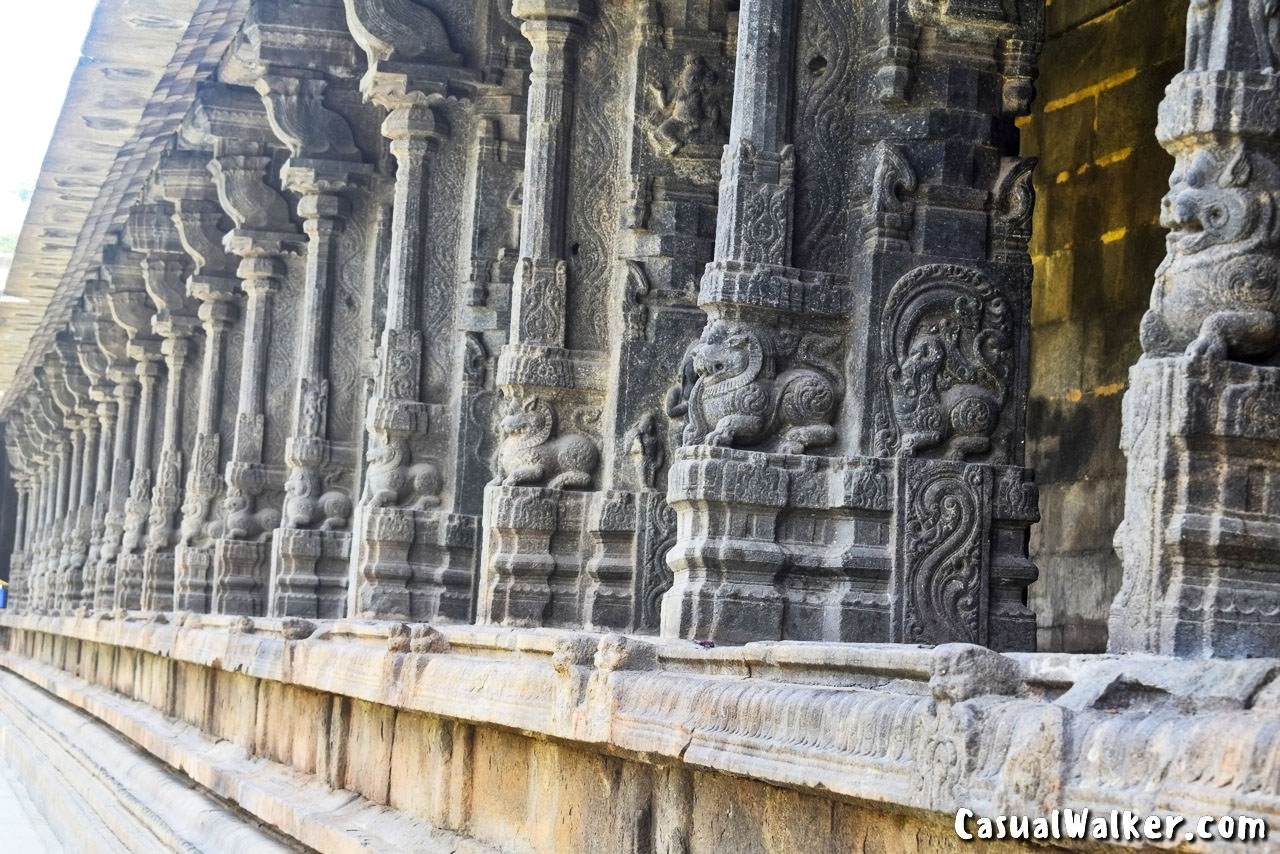
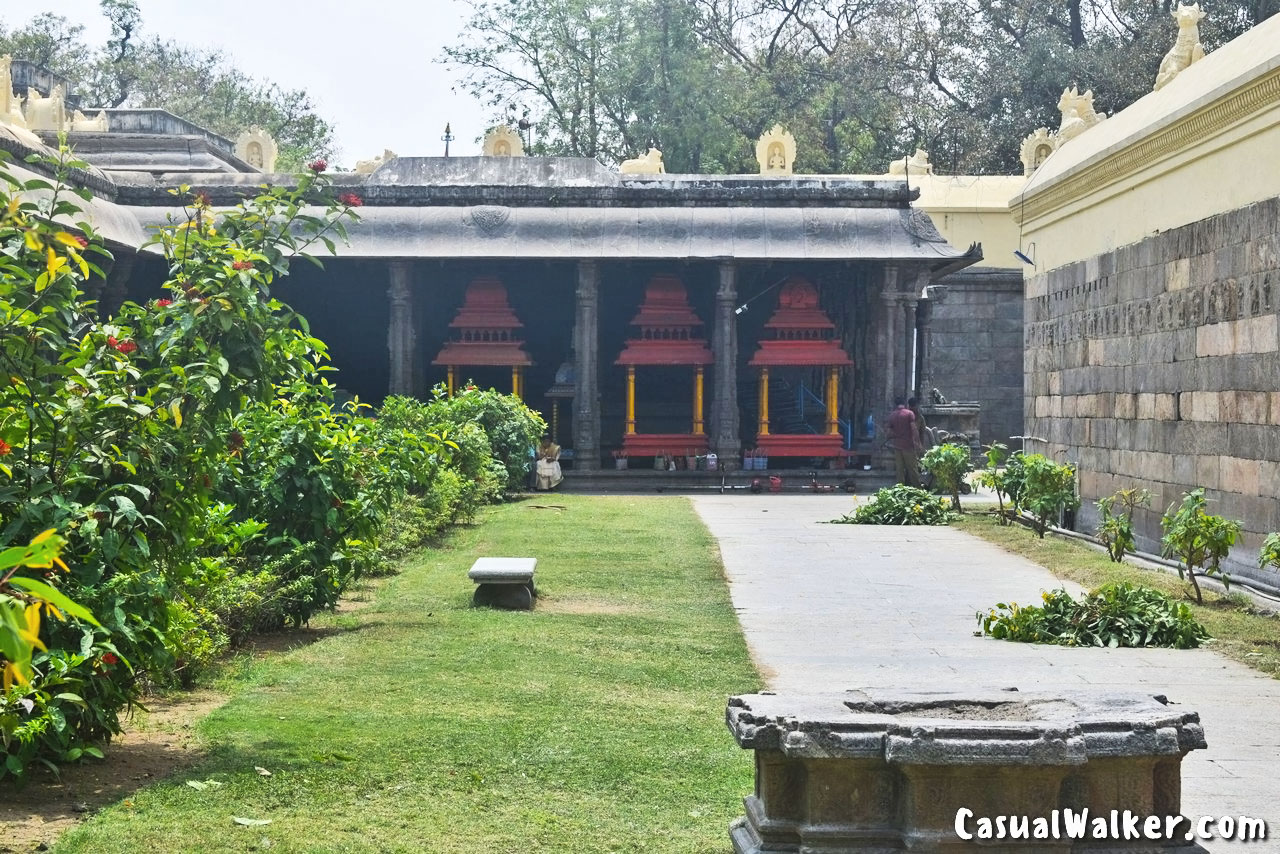
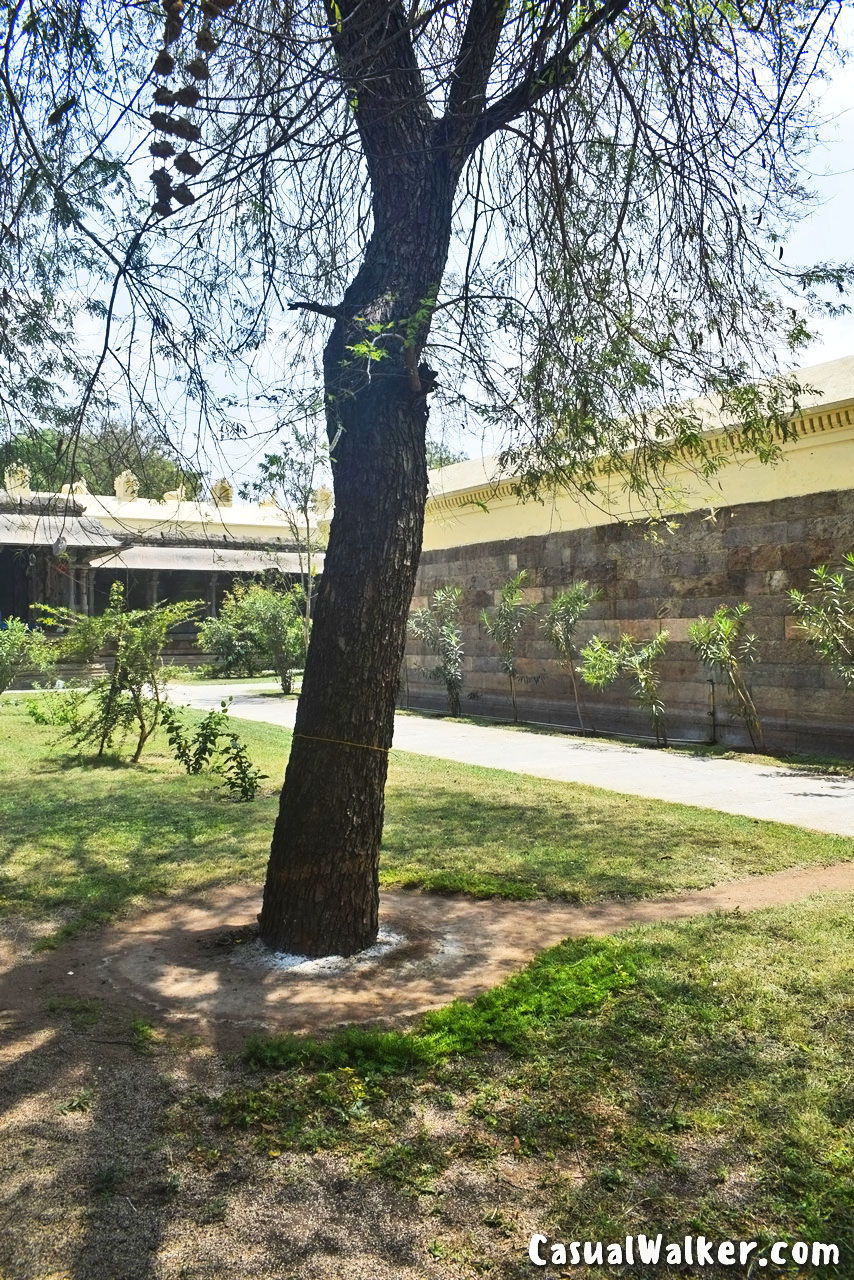
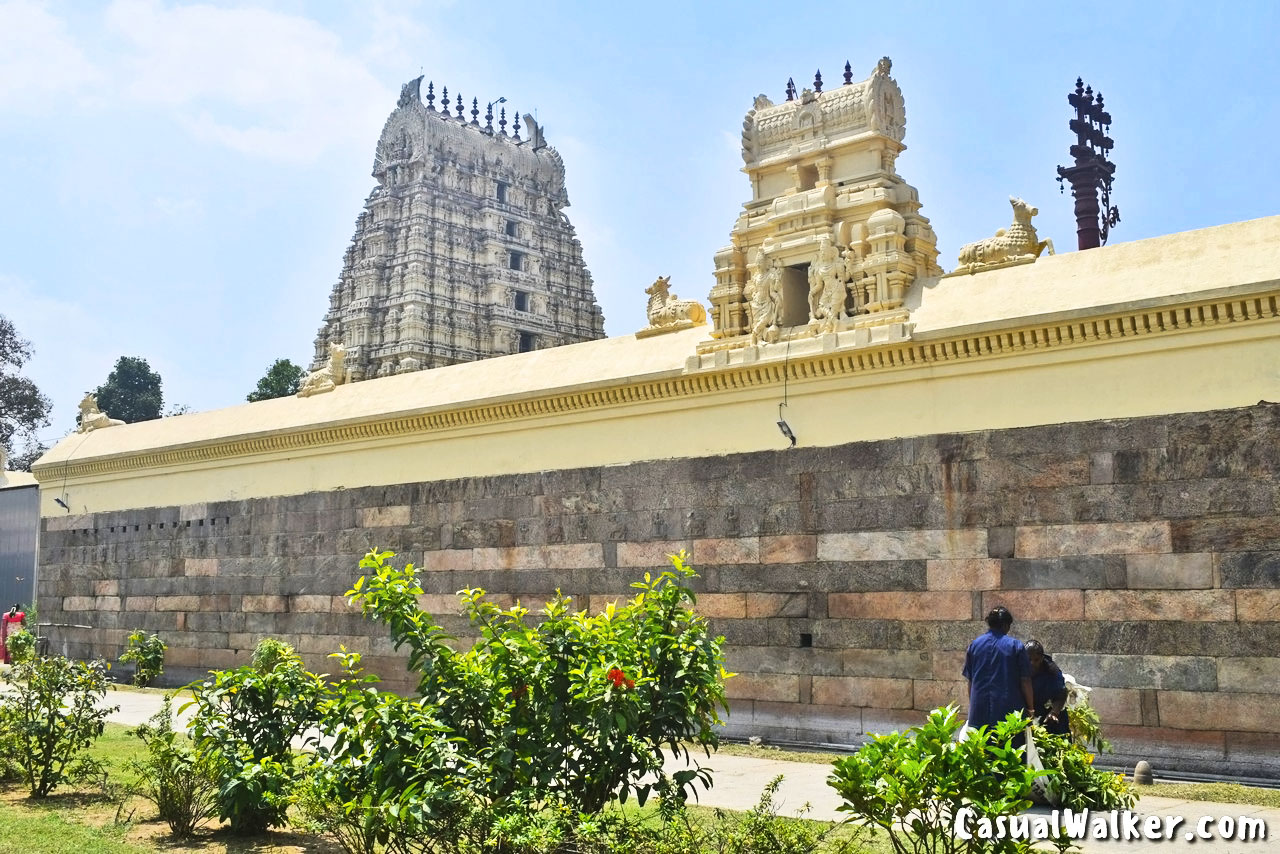
Temple Well in Jalakandeswarar Temple / Jalakanteshwara Temple in Vellore
The Ganga well, which is a natural spring in itself and not dug is the holy Theertham. The Ganga Gouri Theertham is a well that is used to draw water for bathing statues of deities. Behind Shiva, there is the deity of lord Bhairava. Similar to Kashi, Shiva, Ganga Theertha, and Bhairava can be visited here. It is said that praying here will get the benefit of worshiping Viswanadha in Kashi.


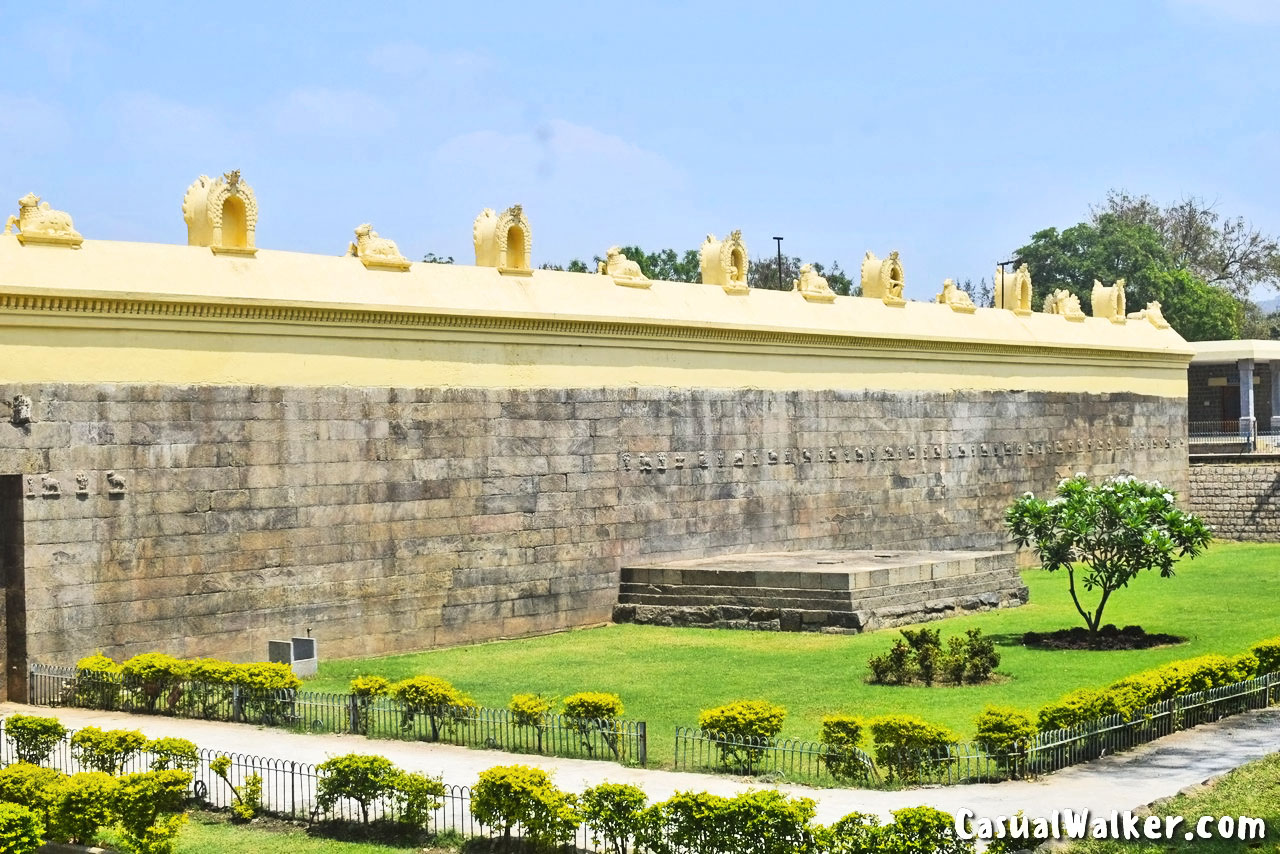
Travel Tips for Jalakandeswarar Temple / Jalakanteshwara Temple in Vellore :
Address of Jalakandeswarar Temple / Jalakanteshwara Temple in Vellore:
Sri Jalakandeswarar Temple, Vellore Fort, Vellore-632 001. Vellore district.
Entry Fee: Free
Temple Timings of Jalakandeswarar Temple / Jalakanteshwara Temple in Vellore: Timings : 6:30 AM – 1:00 PM, 3 – 8:30 PM
Moolavar : Jalakandeswarar
Urchavar : Somaskandar, Chandrasekharar
Amman / Thayar : Akhilandeswari
Thala Virutcham : Vanni
Theertham : Ganga Palaru, Thamarai Pushkarini
Agamam / Pooja : Shivagama
Old year : 1000-2000 years old
How to reach Jalakandeswarar Temple / Jalakanteshwara Temple in Vellore :
On Road:- The district is well connected to all the important cities to Vellore
On Railway: The temple is located at a distance of 17 km from Vellore Town Railway Station
On Airway: The nearest airport is Chennai Airport which is about 130 km from Vellore.

Similar Famous Lord Shiva Temples you may like to Visit:
Jurahareshwarar Temple, Kanchipuram – Best & Famous Shiva Temple In India – Visit, Travel Guide

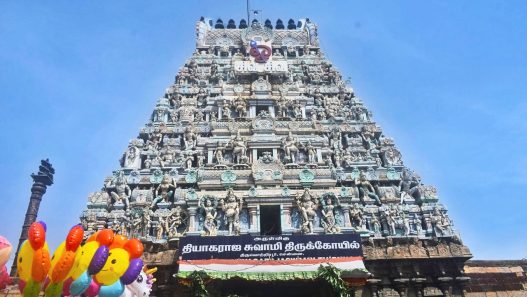



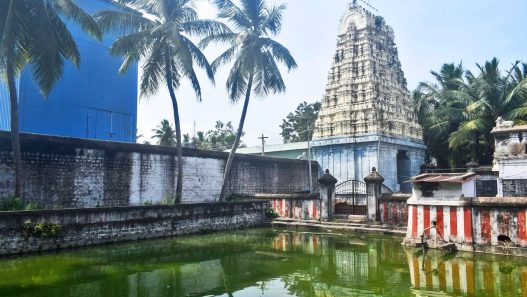

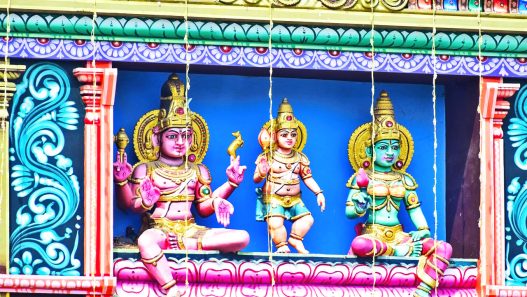

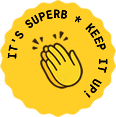

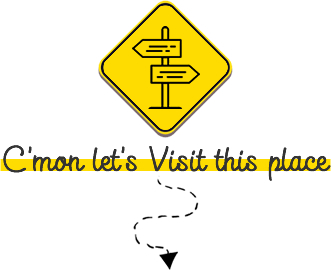

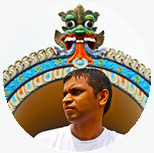

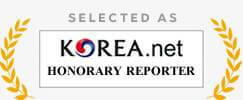
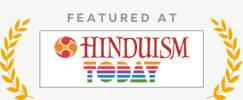
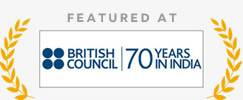














ชอบมุมมองของคุณ, ให้แง่คิดใหม่ๆ กับฉัน.
Feel free to surf to my homepage: พีจีสล็อต